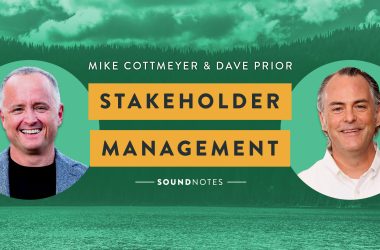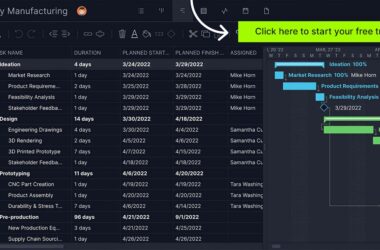AI pilots often show promise in controlled environments but break down when reintroduced to the complexity of the broader enterprise. The problem isn’t the technology—it’s the lack of structural readiness. Success at scale requires clarity of governance, clean data pipelines, and a system that can support the decisions AI is being asked to make, with appropriate guardrails to prevent systemic failures.
Why Does AI Always Stop Working, Even After a Successful Pilot?
We’ve seen it again and again: a small team runs an AI experiment—maybe a predictive model in marketing or a fraud detection model in finance—and it works. The pilot yields promising results. Excitement builds. There’s buy-in at the executive level. It’s time to scale.
Then it all falls apart.
Why?
Because the pilot was built in a sandbox, meaning that the conditions for it to succeed were explicitly created. The sandbox had:
- Clean, trusted, and classified data
- Simplified success metrics that ignored edge cases
- Abstracted organizational complexity
- Unlimited resources and attention
But real environments don’t offer these luxuries. Success from pilot to scale requires building your pilot as a ‘twin’ to your production environment—messy data, organizational friction, and all.
Because the pilot was built in a sandbox., meaning that the conditions for it to succeed were explicitly created. The “sandbox” had clean, curated data. It had a well-defined scope. It wasn’t entangled with legacy systems or cross-functional decision-making. But when you tried to bring that AI model back into the larger organization, it crashed into the same challenges that have plagued your transformation efforts for years.
Their data is fragmented across teams. Decision rights are ambiguous. Feedback loops are measured in quarters, not days. And their systems were built to preserve the past—not enable the future.
The pilot worked because you suspended reality. But AI doesn’t live in isolation. To be useful, it has to plug into the complex, interconnected, often chaotic system that is your enterprise.
To be clear, this isn’t a technology problem, your models are fine, it’s a systems problem. And it’s a problem that reveals itself at the boundary between innovation and integration.
If Your System Isn’t Designed for AI, It Breaks the Model
At LeadingAgile, we’ve long believed that you don’t fix a broken system by throwing more tools, methodologies, or frameworks at it. What you need is a structured transformation process—one that creates the conditions for your chosen goal to thrive, whether that’s Agile, AI, or something else entirely.
AI can’t scale in a system that’s misaligned, overly dependent, and structurally fragile.
It demands a level of organizational maturity most companies simply don’t have.
So, before you scale your AI pilot, ask:
- Do we have a coherent operating model?
- Is our data productized, versioned, and owned like real software?
- Do our teams have the autonomy to act on AI-generated insights?
- Can we make changes in days, not months, when the model learns something new?
If the answer to any of those is “no,” the AI isn’t the problem. The system is.
The truth is that your organization was built around yesterday’s constraints. Traditional bottlenecks, like manual approvals, quarterly planning cycles, siloed data, shaped your entire operating model.
AI moves these bottlenecks overnight, but your structure remains frozen in place. You can’t pour AI into an organization designed for human-speed decision-making and expect it to work.”
What Does It Take to Scale AI?
Scaling AI means preparing your organization to receive it. That’s where AI readiness intersects with organizational design. And that’s why we treat AI like any other enterprise transformation initiative—it requires a transformation architecture that can safely deliver the desired changes in months, not years.
Here’s what that looks like:
- Encapsulate Business Domains
AI adoption struggles when trapped inside monolithic, tightly coupled systems. Enterprises need to re-architect around clear business domains with clean interfaces, so AI can be applied where it creates measurable value, without causing unintended consequences across the organization.
- Align Teams, Tech, Data, and Governance
Organizing the work is just as important as organizing the systems. Teams must own domains end-to-end — with aligned technology, well-governed data, and infrastructure designed to scale AI across the business.
- Fix the Data Foundation
AI is only as good as the data it can access. Without breaking down data silos, improving lineage and quality, and embedding proactive data governance, AI models will underperform, or worse, produce unreliable or risky outputs.
- Build Self-Improving Systems
The pace of AI innovation won’t slow down. Enterprises need systems with built-in evaluation, classification, and self-improvement capabilities—not rigid transformations that are outdated before they’re even finished. Your AI systems should learn from their own performance and adapt without requiring a full transformation cycle.
AI Shows You Your Flaws
In many ways, AI reflects your organization’s health. It surfaces your bottlenecks. It exposes your lack of cohesion. It magnifies your inconsistencies. When the system is broken, AI becomes a high-powered flashlight revealing everything that’s wrong.
But when the system is right—aligned, modular, and governed—AI can thrive.
So don’t just pilot AI.
Prepare for it. Structure for it. Lead for it.
Because the future isn’t about whether AI will work—it’s about whether your organization is ready to work with it.
Q&A
Q: Should we avoid sandbox AI pilots entirely?
A: No, but build ‘production twins’—pilots that include your real constraints, messy data, and organizational friction. If it works there, it can scale.
Q: Why do AI pilots often succeed while large-scale rollouts fail?
A: Pilots are isolated from real-world complexity. At scale, AI gets entangled with legacy systems, unclear governance, and poor data quality.
Q: How do I know if my organization is ready for AI?
A: Look for autonomy at the team level, clean and accessible data, clearly defined decision rights, and the ability to act quickly on new insights.
Q: What role does LeadingAgile play in AI readiness?
A: We help organizations restructure around clarity, alignment, and flow and creating the conditions that enable AI to scale sustainably.



![surviving-career-chaos:-“pause-if-you-must,-but-don’t-stop.”-[video]](https://prodsens.live/wp-content/uploads/2025/06/36273-surviving-career-chaos-pause-if-you-must-but-dont-stop-video-110x110.png)



